AMERICAN Bharatanatyam dancer and choreographer Mythili Prakash has captivated audiences worldwide with her dy - namic and visually stunning productions.
Her acclaimed show, She’s Auspicious, explores the relationship between femininity, purity, and divinity through the lens of the Goddess. The production has evolved from a solo piece into an ensemble performance and will be showcased at Sadler’s Wells in London from February 28 to March 2.
This marks another milestone in a lifelong journey of dance that began with lessons from her mother, Viji Prakash, and led to celebrated performances across the globe.
In a conversation with Eastern Eye, Mythili discusses her artistic journey, the creation of She’s Auspicious, her deep love for Bharatanatyam, and role as a powerful symbol of empowerment.
How would you sum up your dance journey?
I think it’s been very immersive. As a child, it was part of my home environment, so dance naturally became a part of my identity – how I express myself and my role as a dancer. This connection has carried me from childhood to adulthood, as someone growing up outside the cultural roots of the form in another country. Now, as a full time performer, I continue to engage deeply with Bharatanatyam.
Did you ever feel intimidated by your mother being a great exponent of dance, or did that inspire you?
I think more than anything, it inspired me because she was always a role model. Growing up, I wanted to be like her rather than feel like I was competing or living up to something. I also felt that my voice was different from hers, as she had come to America from In dia, while I, a, as an Indian American, had a distinct perspective. Our voices always felt unique and separate from one another.
Would you describe yourself as a fearless dancer?
(Laughs) Now, yes, but in the past, not at all. I think it has been a journey, and it continues to evolve over time. Fearlessness, for me, exists on a broad spectrum.
What inspired your dance show She’s Auspicious ?
So many things – it stemmed from personal reflection on the roles I play as a woman, mother, dancer, and practitioner of Bharatanatyam, which carries a very specific history. I began questioning habits and social patterns – how we behave in society within these roles, and how I navigate them as an individual. It was about re- examining these as-pects, recognising how we often strive to make everything beautiful, harmonious, presentable, and performative. The process involved stripping away that scaffolding to reveal the raw humanness beneath.
What can audiences expect?
I think it’s important for audiences to come in and take what they want from it. Often in Bharatanatyam, there’s an expectation of seeing a specific story or being told what to interpret. In this piece, however, there’s a lot of abstraction and many layers to each image – layers infused with the emotions and feelings that have gone into its creation.
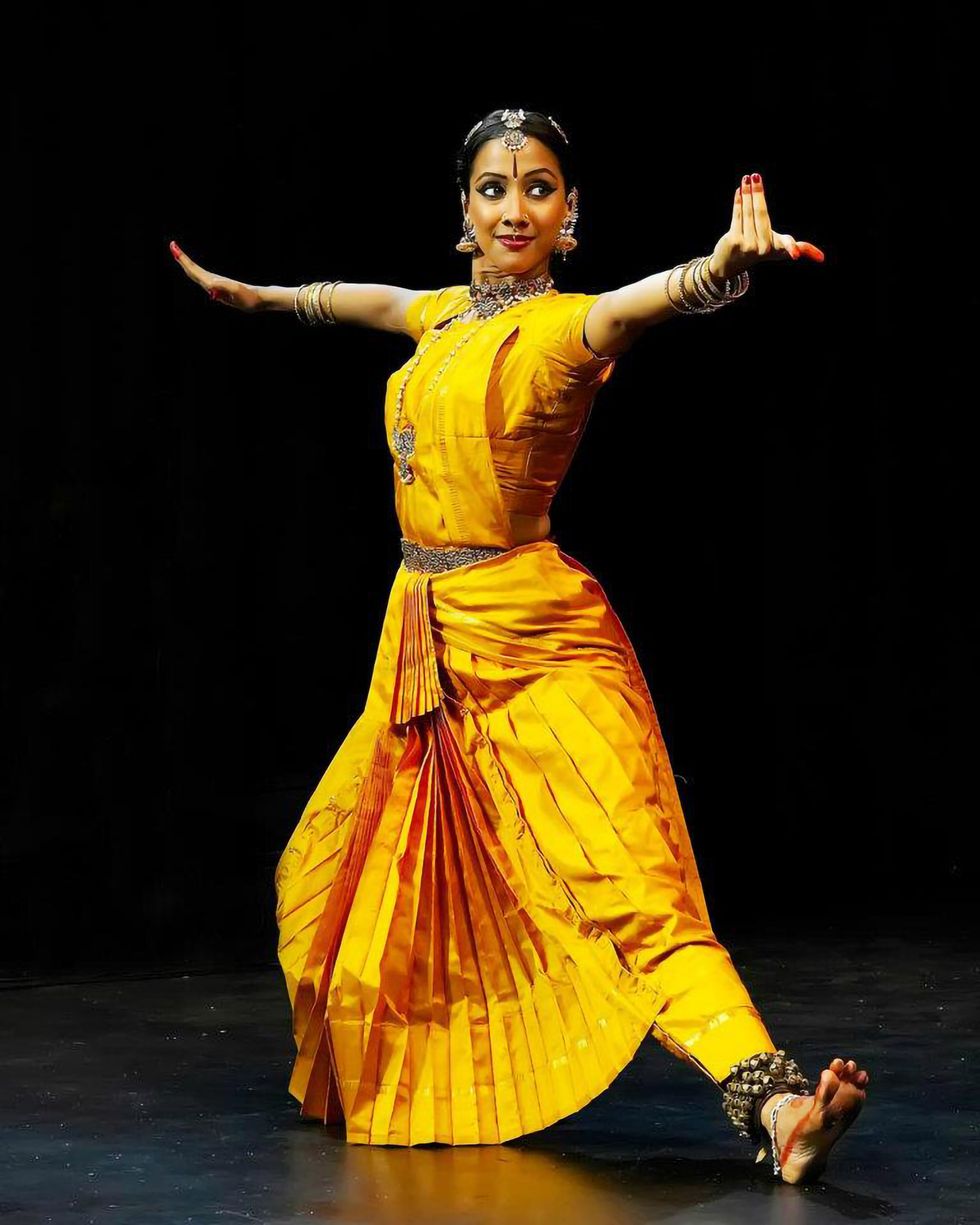
Tell us about that.
What I love is how audience members take away so many different interpretations. When they share their feedback, it becomes part of how I see the piece as well. It’s important to me that people experience it in their own way, rather than trying to understand something specific that I’m attempting to communicate.
Did you learn anything new while creating this show?
It’s hard to even put into words. For me, it’s been a complete learning process of exploration. It was a completely different way of working because it wasn’t about writing a script, composing music, and then creating choreography. This time, it wasn’t about making choreography at all – that was the key difference. It was about allowing myself to improvise. The show was created during the pandemic, and I realised that it fundamentally changes the way you engage with things.
How do you mean?
It wasn’t about creating a product or working towards an end goal. It was simply about sitting in the process of exploration, marinating in it, and seeing what emerged. I’d love to find a way to bring that approach to my other work, even if I don’t have the same time and space the pandemic allowed. It’s about going to those deep levels of immersion – sitting with things, letting them simmer, and allowing them to find their own voice and rhythm.
She’s Auspicious started off as a solo piece and now you are performing it with other dancers… It’s only since (last) January that we’ve added more dancers.
The essence of the solo remains, as it’s not entirely a collective performance. Audiences can interpret the other characters in various ways – as extensions of her at different moments, as responders, or even as figures exerting control over her. While I still experience an internal, singular journey as a performer, there’s now a powerful sense of collective energy as well. It feels like the best of both worlds.
Do you have a favourite moment in the show, She’s Auspicious?
It’s difficult to choose. With each run, I discover new things, and ‘aha moments’ tend to emerge in different places every time, keeping it exciting.
How do you feel when you’re on stage?
It requires me to be supremely focused and completely attuned to the moment, which is true for any performance. However, I can’t rely on memories of how I have done it before or try to recreate past experiences. I’ve been very vigilant about embracing my physical, mental, and emotional state as it is in that moment, letting it guide me, and seeing what arises naturally.
Do you ever get nervous before stepping onto stage?
Oh my god, yes, absolutely. But alongside that nervousness, there’s also a deep sense of calm and focus. I try to clear my mind completely before a performance, especially since this piece is so physically and emotionally charged. If I carry too much emotion at the surface, there’s a risk of it becoming indulgent. So, I focus on staying blank and super calm – but the nerves are always there too.
What do you love the most about Bharatanatyam as an art form?
I love the ability to embody something beyond the normal human self – something that feels like me, yet also not me. At times, I feel like this is the truest version of Mythili, yet it exists outside the everyday Mythili who operates at a mundane level. It’s that sense of transcending a singular identity that I absolutely love.
It’s empowering, inspiring, and magical. If you could learn something new in dance, what would it be?
At this moment, I’d love to explore two very different styles. One would be something like West African dance – cathartic, rhythmic, and full of release. The other would be Tai Chi, which embodies a deep internal stillness and balance. I think practising both alongside each other would be an incredibly exciting and enriching experience.
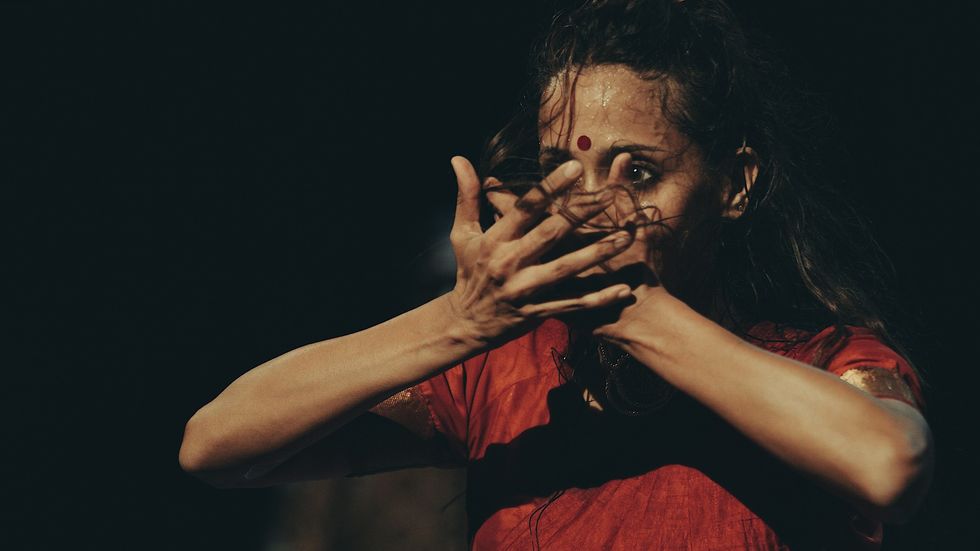
What does dance mean to you today?
That’s a big question. Dance is how I understand and filter everything – it’s been that way since the beginning because I grew up with it. Bharatanatyam, with its stories, characters, and myths, has always been my lens for understanding the world. It shapes how I think about politics, society, personal relationships, and even meditation. Everything gets processed and expressed through dance and music. So, for me, dance is a lens through which I perceive, feel, and articulate everything in life.
Your pieces, including She’s Auspicious, are empowering and inspiring. How do you feel about being a strong symbol of girl power?
I love that. I hadn’t thought of it that way, but I think it’s about power and also about pointing out the absence or distortion of power. Some people have questioned the piece, asking why I’m humanising or seemingly victimising the Goddess. But I don’t see it as victimisation. Humanising gods has always been an integral part of Indian culture – that’s why we have so many stories about them. I believe there’s something deeply empowering in examining things from all perspectives, not just through the lens of glorification.
Tell us more about that perspective.
When I distil it to its essence, being seen as a symbol of girl power is about honesty – being raw and true to what is, without performing, fabricating, or presenting something just to meet others’ expectations. If people can draw inspiration from that authenticity, apply it to their own lives, and find beauty and strength in embracing what truly is, then that would be incredible.
Mythili Prakash: She’s Auspicious will be at Sadler’s Wells in London from February 28 to March 2. For more information, visit: www.sadlerswells.com
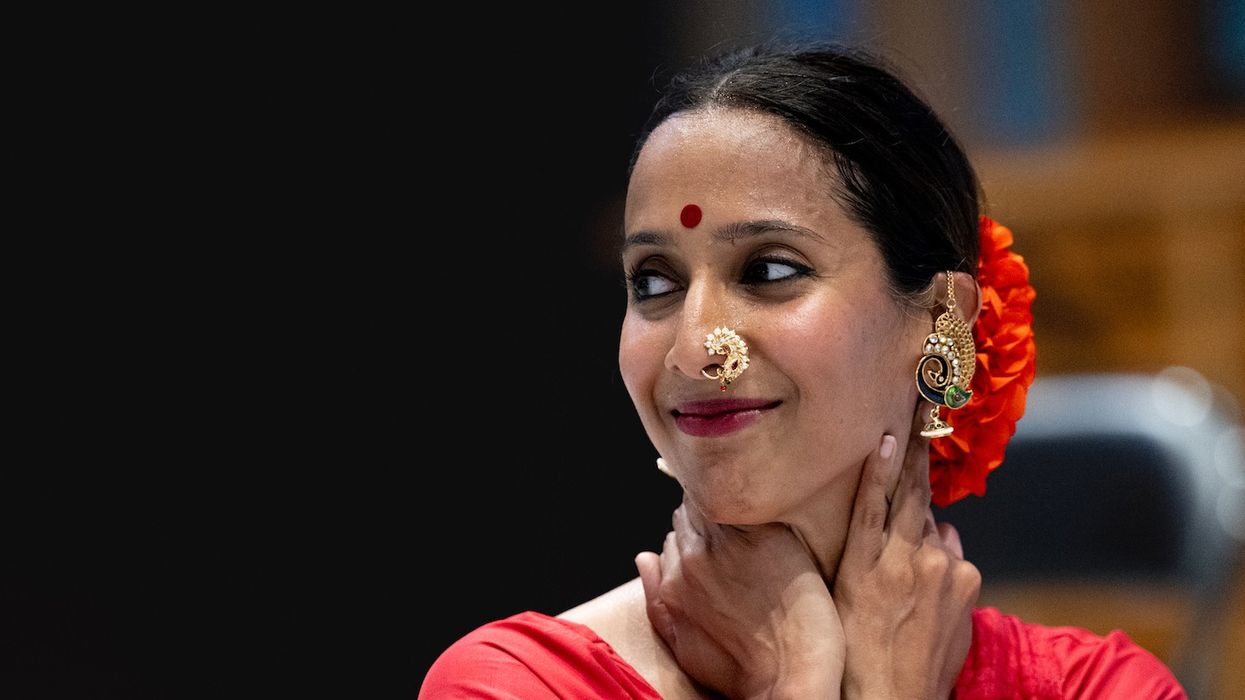
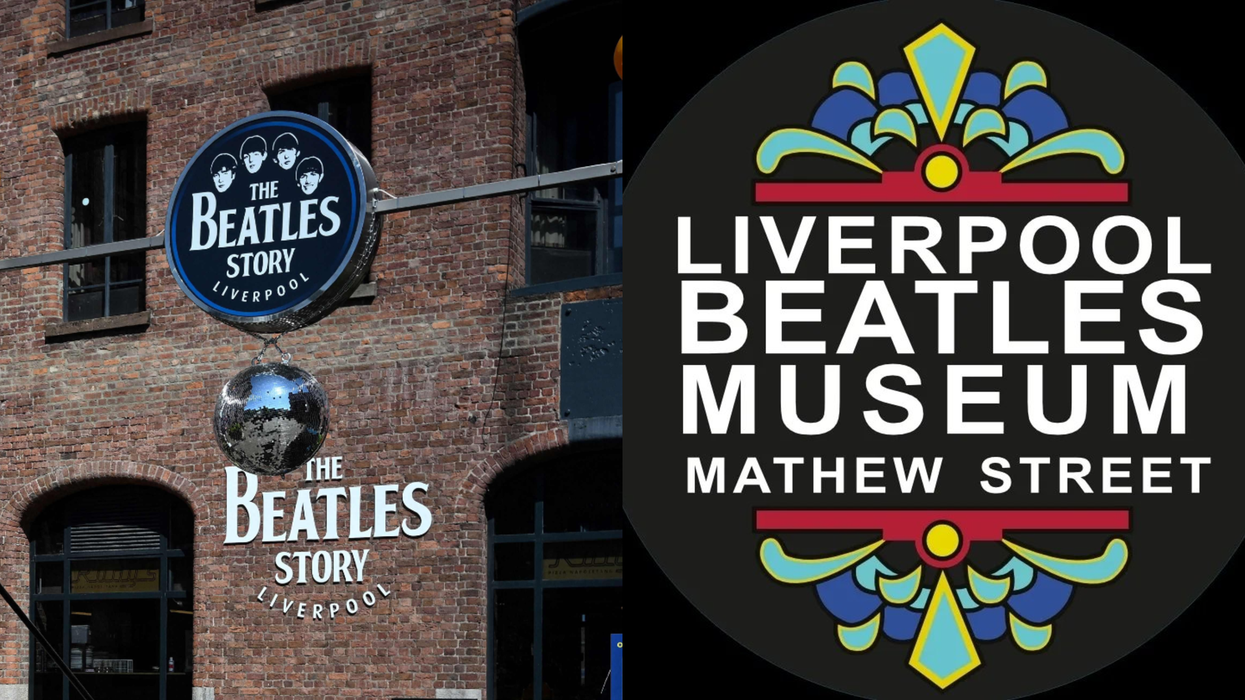
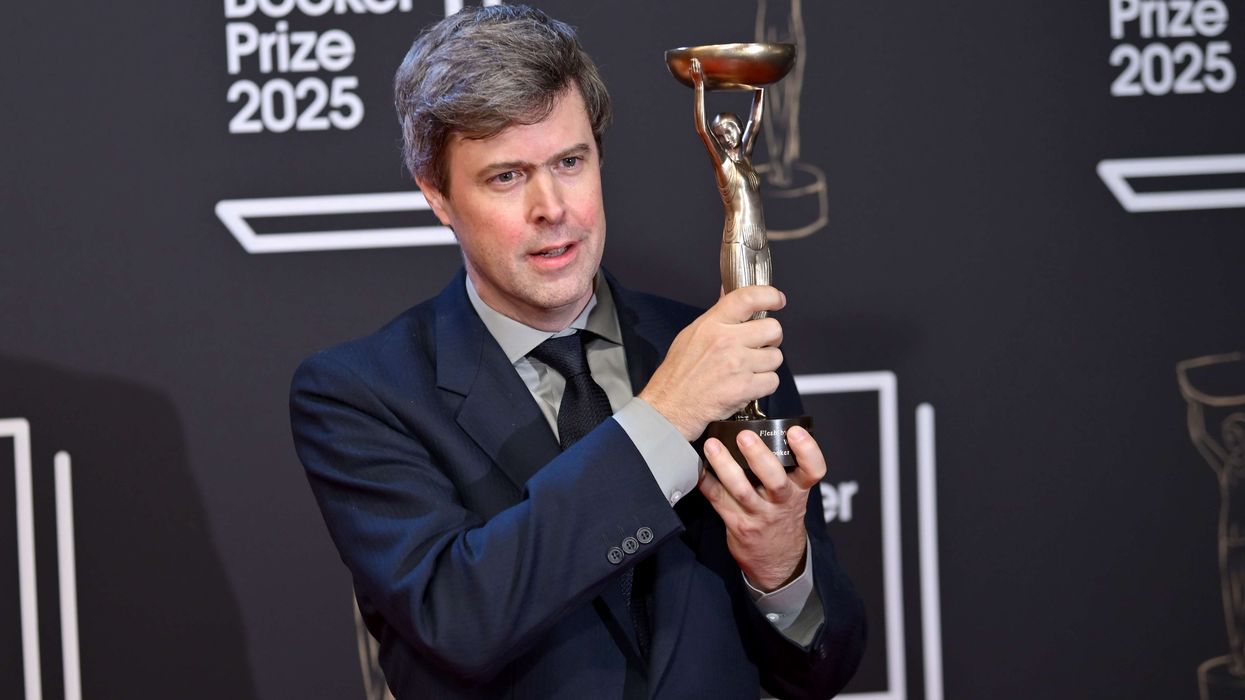

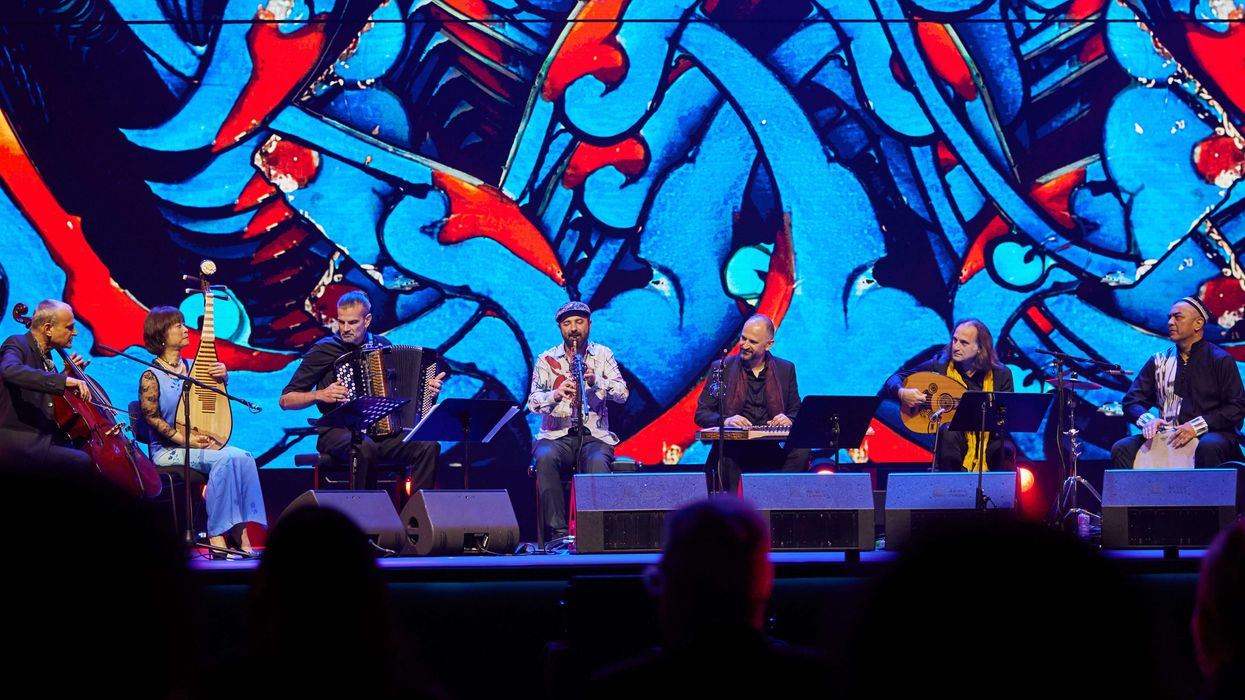

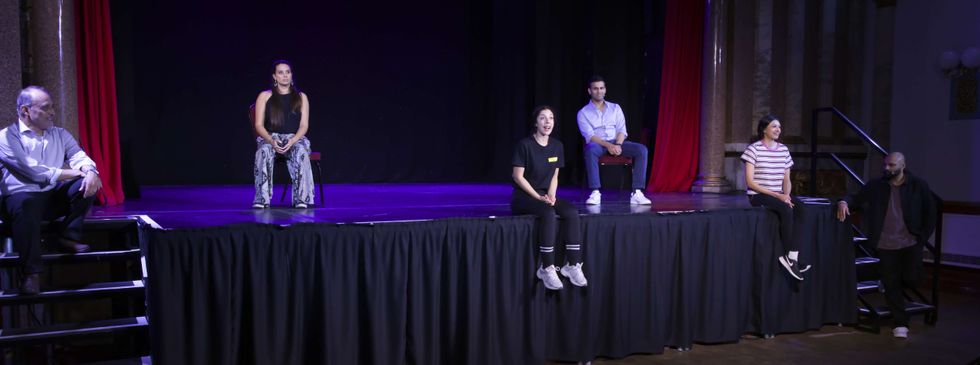 The play is written by Tarun Jasani and directed by Mukul AhmedMGT
The play is written by Tarun Jasani and directed by Mukul AhmedMGT





